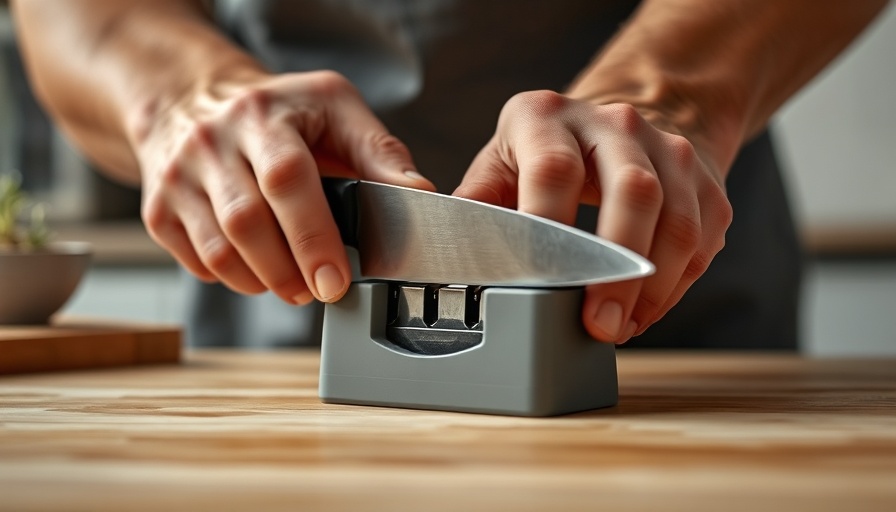
Mastering the Art of Knife Sharpening: A Must-Know Skill
In today’s fast-paced world, maintaining a sharp knife can significantly enhance your efficiency in the kitchen and beyond. Knowing which tools are best for sharpening knives not only saves you time but also elevates your cooking and crafting experience. By investing a little time in learning knife sharpening techniques, you can prolong the lifespan of your tools, save money on professional sharpening services, and enjoy the satisfaction of performing this essential task yourself.
Prepare Your Tools for Effective Sharpening
Before you dive into sharpening, it’s crucial to ensure your tools are adequately prepped. Just washing your knives isn’t enough; some tools need extra work. For instance, to sharpen a chisel or plane, it’s vital that the back side of the blade is flat. Using sandpaper or a sharpening stone, press the back of the blade and work diligently until it shines uniformly. This sets the foundation for an effective sharpening session that follows.
The Best Tools for Sharpening: Your Go-To Guide
When it comes to sharpening kitchen knives, not all tools are created equal. Here are some of the most effective sharpeners you can use:
- Handheld Sharpeners: Easy to use and perfect for kitchen knives with standard beveled edges. Just follow the included instructions for effective sharpening.
- Sharpening Steels: Ideal for honing serrated or oddly shaped knives. Choosing the right steel, such as a diamond steel that matches the scallops of your serrated knife, can revitalizing your blade’s sharpness.
- Electric Sharpeners: For those who prefer technology, electric sharpeners can expedite the sharpening process while ensuring precision. However, they may come with a higher price tag.
- Whetstones: A traditional approach, using whetstones requires skill but can yield exceptional results, making it a favored choice among professional chefs and enthused home cooks alike.
DIY Sharpening Methods You Might Not Have Considered
Running out of sharpeners or tools doesn't mean you have to give up on maintaining your knives. In fact, everyday items around your home can serve as makeshift sharpeners. For example:
- Ceramic Coffee Mug: The unglazed bottom of a ceramic mug acts as a great makeshift sharpener. Simply hold the mug upside down and swipe your knife at a 20-degree angle against the rim.
- Leather Belt: Believe it or not, a leather belt can help sharpen your knife. Apply honing oil, hold your knife at an angle, and draw the blade against the leather.
- Corrugated Cardboard: The fibers in cardboard can help realign the blade’s edge. Simply cut the cardboard into a suitable shape and run the blade over it.
Sharpening from Everyday Experiences
As we constantly handle knives in various forms - whether in the kitchen, during outdoor adventures, or in crafting - sharpness correlates directly to safety and efficiency. Picture this: you’re out camping, and your trusty knife is dulled after several uses. But with an understanding of these sharpening techniques, you could turn a dull blade into a reliable cutting tool using simple materials available in your environment.
Why Knife Maintenance Matters—More than Just Sharpness
Your knife's sharpness enhances your ability to prepare meals with precision and ease, cutting through ingredients like butter. Dull knives can lead to accidents since users apply more force, which can result in slips and cuts. By honing your skills in sharpening knives, you not only ensure better performance but also prioritize safety in your cooking and crafting.
Conclusion: Prioritize Safety and Skill in Knife Sharpening
Investing time in learning how to sharpen your knives effectively can pay off in terms of performance and safety. Embrace the art of knife sharpening as an essential skill that empowers you to maintain your tools and enjoy their use longer. So pick up those tools, dive into sharpening, and keep your blades ready for any task!
 Add Row
Add Row  Add
Add 




Write A Comment